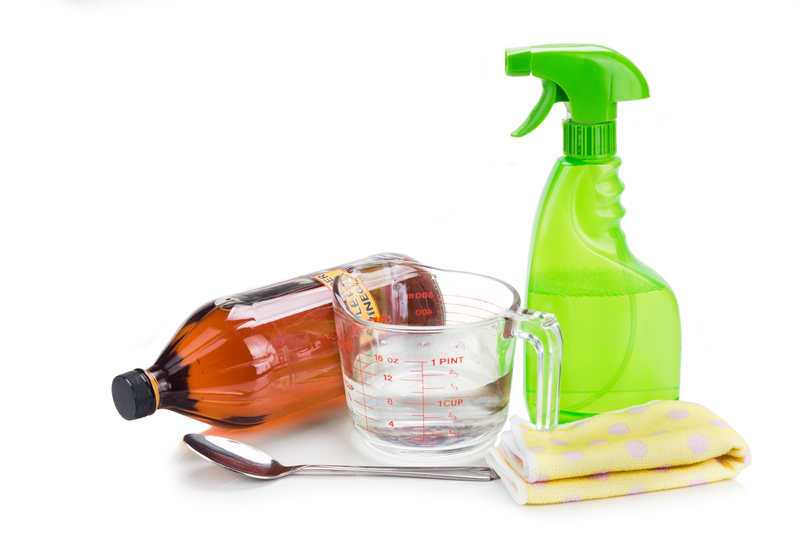Efficient solutions to tackle mould on window sills
Posted on 11/06/2025
Efficient Solutions to Tackle Mould on Window Sills
Mould on window sills is a common--and persistent--problem for many homeowners. Left unchecked, it not only tarnishes the aesthetics of your living space but can also contribute to health issues such as allergies and respiratory troubles. As mould thrives in damp and humid environments, windows serve as an especially vulnerable entry point due to condensation and weather exposure. Fortunately, efficient solutions are available to help you tackle mould on window sills once and for all. This comprehensive guide covers everything you need to know: why mould forms, how to efficiently remove it, and most importantly, how to prevent its return.

Understanding Mould on Window Sills
What Causes Mould Growth on Window Sills?
- Condensation: Windows are prone to condensation, especially in winter when warm indoor air meets cold glass surfaces.
- Poor ventilation: Stale, humid indoor air doesn't circulate, increasing the risk of moisture buildup.
- Leaks: Broken seals or poorly fitted windows can let rainwater seep in, creating a moist environment perfect for mould growth.
- Lack of sunlight: Mould thrives in dark, damp areas, making window sills with heavy curtains or blinds especially vulnerable.
The Health Risks of Indoor Mould
Exposure to mould spores on window sills can trigger:
- Allergic reactions like sneezing, watery eyes, and skin rash.
- Asthma attacks and other respiratory issues.
- Headaches and fatigue in sensitive individuals.
- Aggravation of symptoms for people with weakened immune systems.
It's vital to address mould on window frames and sills promptly.
Efficient Methods to Remove Mould from Window Sills
Step 1: Safety Precautions
- Wear gloves, a mask, and goggles to avoid direct contact with spores.
- Ensure proper ventilation by opening windows and doors before you start cleaning.
- Remove soft furnishings and cover the floor to protect from drips and splashes.
Step 2: Choosing the Right Cleaning Solution
There are several mould cleaning solutions for window sills:
- White vinegar: An effective, non-toxic mould remover that kills most species of mould.
- Hydrogen peroxide (3%): Good for stubborn growths, it disinfects and removes stains.
- Baking soda: Safe and gentle, ideal for sensitive sills and painted surfaces.
- Commercial mould removers: Specially formulated sprays for stronger infestations.
Step 3: Cleaning Procedure
- Saturate the area: Spray your chosen solution generously on the affected window sill and allow it to sit for at least 10-15 minutes to break down the mould.
- Scrub and remove: Use a soft-bristled brush or sponge to scrub the surface gently, paying special attention to the corners and crevices where mould often hides.
- Wipe down: Use a clean, damp cloth to wipe away loosened mould and residue.
- Repeat if necessary: For severe cases, you may need to repeat the process to ensure all spores are removed.
Note: Never mix bleach with ammonia or other cleaning agents--this can create dangerous fumes.
Step 4: Dry Thoroughly
After cleaning, dry the window sill completely using a towel or cloth. Residual moisture can cause mould to return quickly.
Step 5: Dispose of Cleaning Materials Safely
- Throw away disposable gloves, masks, and sponges.
- Wash reusable items in hot, soapy water.
- Seal and dispose of waste bags promptly.
Advanced Techniques for Persistent Mould
Using a Dehumidifier
Even after cleaning, high humidity can reignite mould problems. A dehumidifier can reduce overall moisture in your home, making it harder for mould to thrive on window frames and sills.
Treating Wooden Window Sills
- Sand the surface lightly (if the wood is unfinished or untreated) to remove embedded mould, then clean with vinegar or a specialised wood cleaner.
- Seal or repaint with a mould-resistant paint or varnish to protect against fungal return.
Replacing Damaged Caulk and Seals
Mould can penetrate into old, cracked, or failing caulk around windows. To achieve the most efficient long-term solution for window sill mould, carefully remove old sealant, clean the area, and apply a new high-quality, waterproof caulking compound.
Hiring Professional Mould Remediation
In severe cases--such as widespread infestation, toxic black mould (Stachybotrys), or hidden mould behind the sill--seek assistance from certified professionals. They have advanced tools and knowledge to eradicate mould thoroughly and safely.
How to Prevent Mould on Window Sills
Maintain Proper Ventilation
- Open windows regularly to let fresh air circulate, especially after showers or cooking.
- Install extractor fans in bathrooms and kitchens if your property is prone to high humidity.
- Use trickle vents on windows for year-round airflow, even in cold weather.
Control Humidity Levels
- Keep indoor humidity below 60%. Use a hygrometer to monitor levels.
- Dry clothes outdoors when possible, or use a vented dryer.
- Fix leaks and address water ingress around windows immediately.
Clean Windows and Sills Regularly
- Wipe down window sills weekly with a mild detergent or diluted white vinegar.
- Remove visible condensation daily with a microfiber cloth or squeegee during cooler months.
Use Mould-Inhibiting Products
- Apply a mould-inhibiting spray after cleaning to discourage growth.
- Consider painting wooden window frames with mould-resistant paint for added protection.
Natural Remedies for Mould on Window Sills
White Vinegar
Undiluted white vinegar destroys up to 82% of mould species and prevents new growth. Simply spray onto the afflicted window sill, let sit for an hour, then wipe clean.
Baking Soda
Mix one teaspoon of baking soda with two cups of water. Spray on the mouldy surface, scrub, then wipe away. This also helps to eliminate any lingering odours.
Tea Tree Oil
A natural antifungal, tea tree oil works well against small and moderate mould patches. Mix one teaspoon with a cup of water, spray, and leave to dry--no need to rinse.
Common Mistakes to Avoid When Tackling Mould
- Ignoring underlying problems: Cleaning the visible mould without addressing leaks, poor insulation, or ventilation will just bring it back.
- Using only water: Water alone doesn't kill or remove mould; it can actually help it spread.
- Painting over mould: Trapping mould under a fresh layer of paint can worsen the problem and damage finishes.
- Mixing cleaning chemicals: Always use one cleaning solution at a time and never mix bleach with ammonia or vinegar.

Frequently Asked Questions
Can I use bleach to remove mould from window sills?
While bleach can kill surface mould, it isn't always effective on porous materials like wood and may harm painted finishes. Vinegar, peroxide, or dedicated mould removers are typically safer and more effective for window sills.
Is mould on window sills dangerous?
Some mould species can cause allergies, asthma attacks, and respiratory problems. If you notice black, green, or fuzzy mould, especially in large patches, treat promptly and consider professional remediation if symptoms persist.
How often should I clean my window sills to prevent mould?
Wipe down sills at least once a week or more often during damp seasons. Regular cleaning, combined with moisture control, is key to prevention.
What if the mould keeps returning?
Recurrent mould often signals an ongoing moisture problem (like hidden leaks or insufficient insulation). Address the root cause--not just the symptom--for long-term results.
Conclusion: Efficient, Long-Term Solutions for Window Sill Mould
Dealing with mould on window sills doesn't have to be a constant battle. By understanding the causes, cleaning efficiently, and taking proactive steps to reduce moisture and improve ventilation, you can keep your windows--and your home--fresh, healthy, and mould-free.
- Regular inspections and quick treatment stop small patches from becoming a major health issue.
- Proactive prevention--from dehumidifiers to mould-resistant paints--ensures mould won't make an unwelcome comeback.
- Stay vigilant--your home, your air quality, and your family's health depend on it.
For more expert tips and advice on efficient solutions to tackle mould on window sills, bookmark this guide and refer to it every season.





